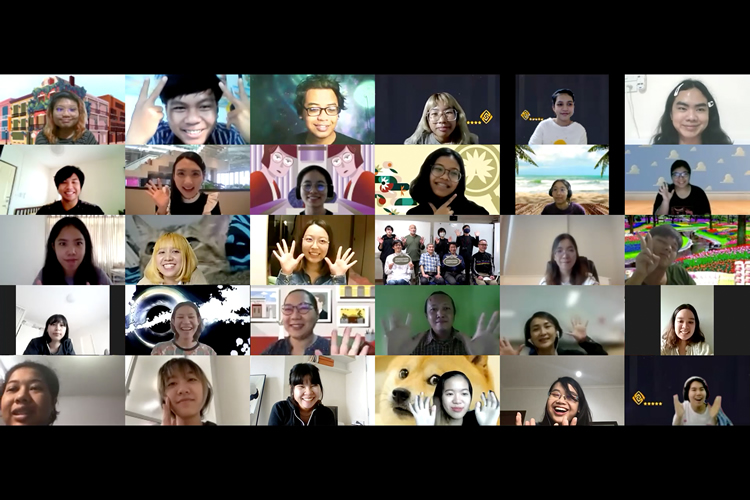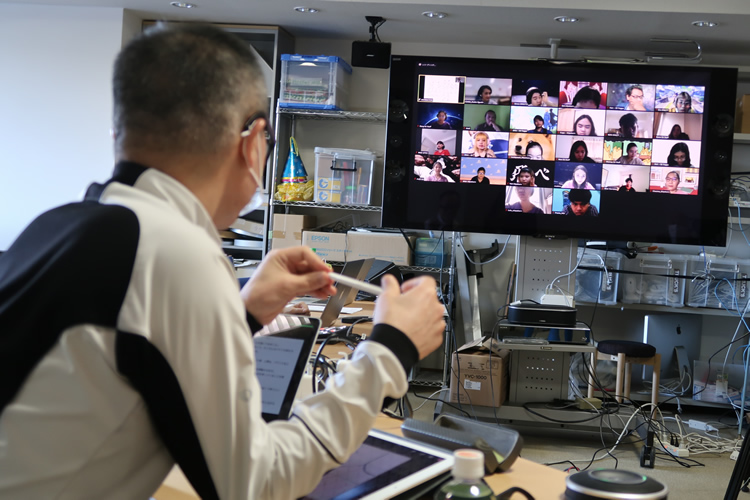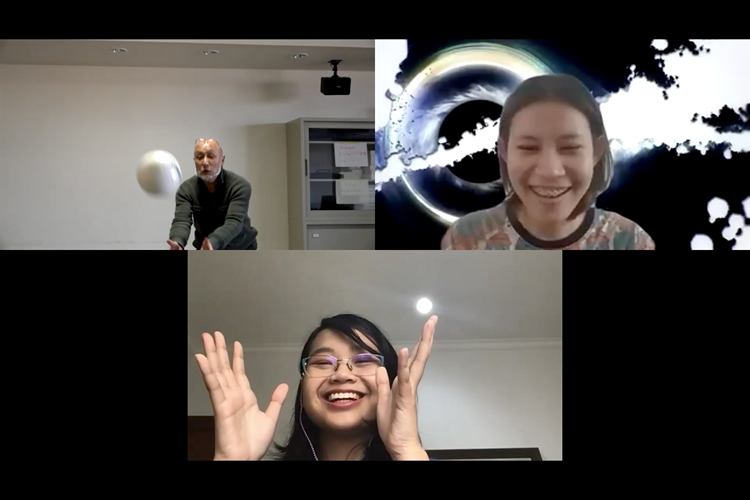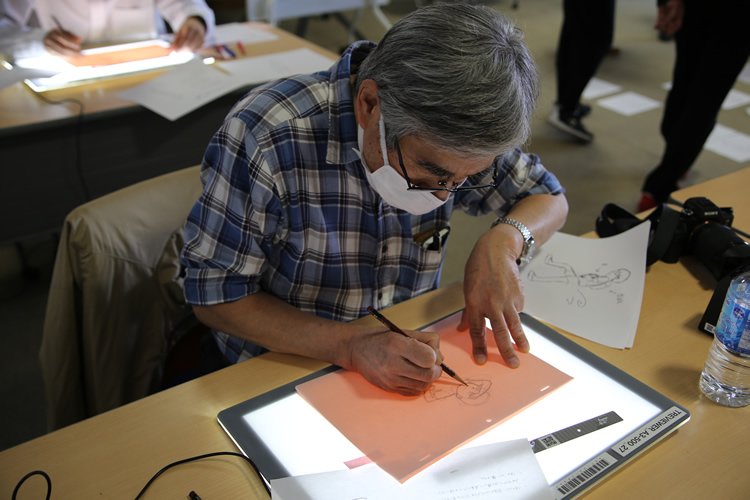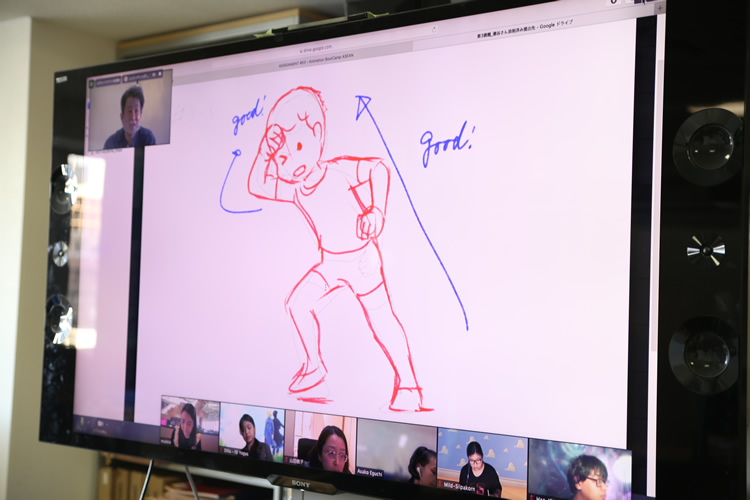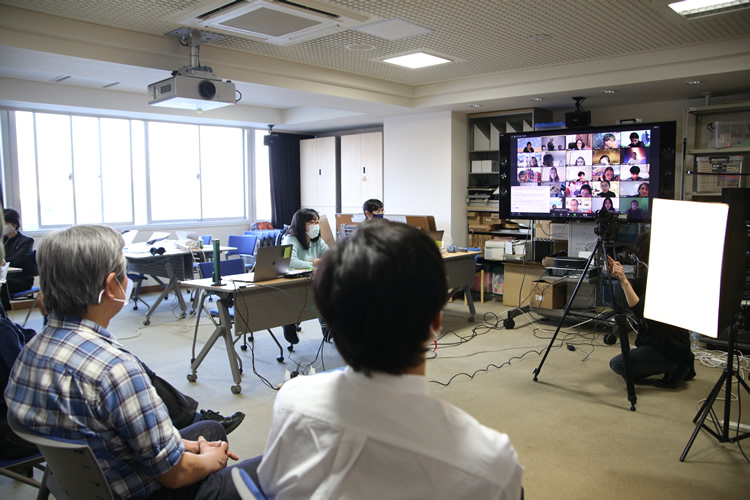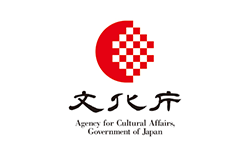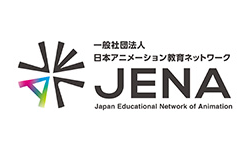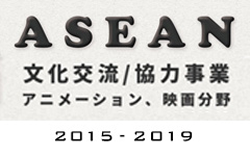2020 Program Report
Animation Project
Background and Objectives
In the past Japanese anime could only be found on TV and in movie theaters, but now it can be easily accessed overseas via the internet. The questionnaire responses for this project suggest that young people in Thailand and Indonesia are watching a whole variety of Japanese anime works, not just a handful of extremely popular titles.
However, most of the information about Japanese anime that is accessible online comes from the perspective of viewers, and information from the producers’ perspective is hardly abundant. Most of that information is only available in the Japanese language, which means even less can be found in English. When young people abroad with an interest in Japanese anime aspire to create something similar, it is difficult for them to find learning opportunities that can guide them in that direction.
In response to this situation, during the five years between fiscal 2015 and 2019 we held the hands-on workshop called Animation Boot Camp ASEAN where we dispatched professional animators from Japan to teach the basics of animation expression to local young talents in Thailand as part of the animation section of the Program for Dispatching Experts of Pop-culture to ASEAN Countries. The curriculum and teaching methods were based on the same-named workshop that has been held since fiscal 2012 as an Agency for Cultural Affairs media arts projects with the aim of “training talent who can seek personal growth and development” for both 2D and 3D animation. The workshop has earned acclaim for teaching the basics and essentials of animation and emphasizing the importance of “observing” and “feeling” through one’s own body and the pursuit of “expression that communicates to others.”
Building on the achievements of Animation Boot Camp ASEAN, this project aims to develop and implement an international animation education curriculum that embraces online learning. In addition, it presents an innovative model project for talent development and international cultural exchange in response to the impact of COVID-19.
Team
【Staff】
Instructors
Takeshi Inamura [Animator/Studio Ponoc, Inc.]
Shinji Seya [Animation Director/Tezuka Productions Co., Ltd., Production Department head]
Takayuki Goto [Animator, Character Designer/Production I.G, Inc.]
Nobuo Tomizawa [Animation Director/Telecom Animation Film Co., Ltd.]
Instructors for Assignment Corrections
Kyoji Asano [Animator, Character Designer/Wit Studio, Inc.]
Izumi Seguchi [Animator]
Momoko Yamada [Animator/Studio Nanahoshi]
Directors
Koji Takeuchi [Animation Producer]
Taruto Fuyama [Professor, Tokyo University of the Arts]
Project Producer
Mitsuko Okamoto [Professor, Tokyo University of the Arts]
Project Managers
Asako Eguchi [Project Associate Professor, Tokyo University of the Arts]
Sayaka Omodaka [Assistant Professor, Tokyo University of the Arts]
Assistants
Keigo Ito
Misuzu Hashiji
Interpreter
Rinyaphat Phattaratheeda
Planning and Administration
The Japan Educational Network of Animation (JENA)
Project Administrator
Atsunori Yoshida [Executive Director, The Japan Educational Network of Animation (JENA)]
General Managemen
Tokyo University of the Arts Graduate School of Film and New Media
【Partner】
The Thailand-based partner for this project was Silpakorn University, a national university that is Thailand’s leading art school. Their faculty team led by Chair Chanisa Changadvech of the Faculty of Decorative Arts, Visual Communication Design Department was in charge of project management. Many of the staff members who supported the administration were students who had previously participated in Boot Camp. Four former participants joined this year as teaching assistants.
~Thailand~
<Silpakorn University>
Project Producer
Chanisa Changadvech(Chair of Visual Communication Design Department, Faculty of Decorative Art)
Coordinator
Narumon Rackchean (Officer, Visual Communication Design Department, Faculty of Decorative Art)
Teaching Assistants
Rugtaya Asawasutsakorn [2018 participant]
Ratchanok Wongsombut [2018 participant/2019 staff]
Ploypapat Phusadeekunpaisan [Junior Art Director, Oglivy/2017-2019 staff/2016 participant]
Atikan Intharasukphon [Concept Artist, Riff Studio/2017-2019 staff/2016 participant]
~Indonesia~
<Institut Seni Indonesia Yogyakarta>
Staff
Daru Tunggul Aji(Head, Visual Communication Design Study Program, Visual Art Faculty)
Andi Haryanto(Lecturer, Visual Communication Design Study Program, Visual Art Faculty)
Indiria Maharsi(Lecturer, Visual Communication Design Study Program, Visual Art Faculty)
Arif Agung Suwasono(Lecturer, Visual Communication Design Study Program, Visual Art Faculty)
Heningtyas Widowati(Lecturer, Visual Communication Design Study Program, Visual Art Faculty)
Instructor Profiles
Takeshi Inamura [Animator/Studio Ponoc, Inc.]
Worked at Shin-Ei Animation as an in-between animator and in-between animation checker. Joined Studio Ghibli in 1991 and served as key animator and supervising animator for numerous productions. After freelancing, joined Studio Ponoc in 2017. Major works include Spirited Away (2001/key animator), The Cat Returns (2002/assistant animation director), Howl’s Moving Castle (2004/animation director), Tales from Earthsea (2006/animation director), Ponyo (2008/assistant animation director), From Up on Poppy Hill (2011/animation director), The Wind Rises (2013/ key animator), When Marnie Was There (2014/assistant animation director), The Boy and the Beast (2015/key animator), Your Name (2016/key animator), Mary and the Witch’s Flower (2017/animation director), and Mirai (2018/ key animator).
Takayuki Goto [Animator, Character designer/Production I.G, Inc.]
Animator and character designer at Production I.G. Participated as an animator in projects produced by Toei Animation and Tatsunoko Productions before founding I.G Tatsunoko (now Production I.G) with Mitsuhisa Ishikawa in 1988 after the completion of the Red Photon Zillion series. Major works include Gu Gu Ganmo (1984/animation director, key animator), Red Photon Zillion (1987/character designer, animation director), Please Save My Earth (1993/character designer, chief animation director), HUNTER×HUNTER (1999/character designer, animation director), Ghost in the Shell: Stand Alone Complex (2002/animation director), Ghost in the Shell: Stand Alone Complex 2nd GIG (2004/character designer, animation director), Ghost in the Shell: Stand Alone Complex – Solid State Society (2006/character designer, chief animation director), Erin, the Beast Player (2009/character designer, chief animation director), Kuroko’s Basketball (2012/chief animation director), and Legend of the Galactic Heroes: Die Neue These Kaiko (2018/chief animation director).
Shinji Seya [Animation Director/Tezuka Productions Co., Ltd., Production Department Head]
Joined Tezuka Productions in 1978. Since then, has worked on many works as key animator, animation director, and character designer and is currently also active in education and training programs for young talent. Major works include Blue Blink (1989/animation director), In the Beginning: The Bible Stories (1997/character design, animation director), Black Jack: Sora Kara Kita Kodomo (2000/director), Astro Boy: Tetsuwan Atom (2003/character design, chief animation director), Black Jack (2004/character design, animation director), Nezumi Monogatari (2007/ character planning, animation director), Kumi and the Tulip (2015/key animator, mentor for Anime Mirai 2015), and Kacchikene! (2016/character design, animation director for Anime Tamago 2016).
Nobuo Tomizawa [Animation director/Telecom Animation Film Co., Ltd.]
Major works include Future Boy Conan (1978/key animator), The Castle of Cagliostro (1979/key animator), Little Nemo: Adventures in Slumberland (1989/animation director), Muteki Kanban Musume (2006/director), Niju Menso no Musume (2008/director), Lilpri (2010/director, assistant director), Lupin the Third Part 4 (2015/storyboard aritist, director), Lupin the Third Part 5 (2018/storyboard artist, director), and Tsukumogami Kashimasu (2018/storyboard artist, director).
<Instructors for Assignment Corrections>
Kyoji Asano [Animator, Character Designer/Wit Studio, Inc.]
Joined Production I.G, Inc. in 1996 and worked in roles including animation director and character designer. In 2012 established Wit Studio, Inc. with George Wada and Tetsuya Nakatake. Works include Psycho-Pass (2012/character designer, supervising animation director), Attack on Titan (2013/character designer, supervising animation director), Kabaneri of the Iron Fortress (2016/supervising animation director), and Great Pretender (2020/supervising animation director).
Izumi Seguchi [Animator]
Freelancer who previously worked at Production I.G. Major works include Kuroko’s Basketball (2012-13/animation director, unit director), Giovanni’s Island (2014/key animator), Ghost in the Shell: The New Movie (2015/animation director, prop designer), Kabaneri of the Iron Fortress (2016/key animator for the opening), Flip Flappers (2016/key animator), Lu over the Wall (2017/key animator), Mary and the Witch’s Flower (2017/key animator), Maquia: When the Promised Flower Blooms (2018/key animator), Mirai (2018/key animator), and Kanini & Kanino of Modest Heroes (2018/key animator).
Momoko Yamada [Animator/Studio Nanahoshi]
Joined Tezuka Productions in 2008 and joined many productions as animator and/or key animator. Joined Studio Nanahoshi as CG animator in 2019. Major works include Yu-Gi-Oh! Zexal (2011/key animator), Kids on the Slope (2012/key animator), The Life of Budori Gusuko (2012/key animator), Robot Atom (2014/key animator), Pokémon the Series: XYZ (2015/animation director), March Comes In like a Lion (2016/animation director), Atom: The Beginning (2017/animation director), Dagashi Kashi 2 (2018/animation director), Kaiju Step (2019-20/CG animator), Mienai, Wazawai (2020/animator), and Obake Zukan (2020/animator).
Project Overview
【Project Name】
Animation Boot Camp ASEAN
【Dates】
February 7 (Sun.) to 14 (Sun.), and 21 (Sun.), 2021
* The workshop was initially scheduled for January 8 (Fri.) to 10 (Sun.). It was postponed because the satellite venue in Thailand was closed in response to the third wave of COVID-19.
【Format】
Online
Venue for Transmission in Japan: Tokyo University of the Arts Graduate School of Film and New Media, Bankokubashi Campus
Venues for Participants: Individual homes
【Participants】
20 students
– 15 Thai students
– 5 Indonesian
* In the original plan 25 students were slated to participate, but five students canceled because of the postponement.
【Students’ University Affiliation】
Thailand: Silpakorn University
Visual Communication Design Department, Faculty of Decorative Arts (6 students)
Applied Arts Department, Faculty of Decorative Arts (1)
Fashion Design Department, Faculty of Decorative Arts (1)
Thailand: University of the Thai Chamber of Commerce
Computer Animation Department (2)
Thailand: King Mongkut’s University of Technology Thonburi
Media Arts Department (4)
Thailand: Kantana Institute
Animation Production Department (1)
Indonesia: Institut Seni Indonesia Yogyakarta
Visual Communication Design Department (5)
Project Content
“Lecture Day 1 on Drawing a Convincing Pose -February 7 (Sun.)”
15:00~ Orientation
15:30~ Ice breakers
16:00~ Instruction using video teaching materials
17:00~18:15 Assignment⓵ explanation
“Individual Work on Assignment⓵ -February 8 (Mon.) to 9 (Tues.)”
“Instructor Corrections -February 10 (Wed.) to 12 (Fri.)”
“Lecture Day 2 on Expressing through Movement Poses -February 14 (Sun.)”
15:00~ Assignment⓵ Critique
15:30~ Lecture⓵
16:15~16:30 Assignment⓶ Explanation
“Individual Work on Assignment⓶ -February 15 (Mon.) to 16 (Tues.)”
“ Instructor Corrections -February 17 (Wed.) to 20 (Sat.)”
“Lecture Day 3 on Acting through Poses -February 21 (Sun.) “
11:00~ Assignment⓶ Critique
11:30~ Lecture⓶
12:00~ Assignment⓷ Explanation
12:45~ Individual Work on Assignment⓷
14:00~ Assignment Corrections
15:00~ Assignment⓷ Critique
16:30~18:20 Question and Answer Session
State of the Project
Questionnaire Responses from Workshop Participants
Number of the respondents: 19
*This was an online questionnaire following the workshop.
Do you like Japanese animation?
I like it very much. ・・・・・・・・・・・ 14 (73.3%)
I like it to some degree. ・・・・・・・・ 3 (15.8%)
Neither. ・・・・・・・・・・・・・・・・・・・・・・ 1 (5.3%)
I moderately dislike it. ・・・・・・・・ 1 (5.3%)
What is your favorite Japanese animation work(s), if any? (multiple answers possible)
3: Violet Evergarden
2: Spirited Away, Arietty, Fullmetal Alchemist, Your Name, Haikyu!!, Attack on Titan, Neon Genesis Evangelion
1: All works by Studio Ghibli, Great Pretender by Wit Studio, “Acacia” music video by Bump of Chicken (Bones),
Hololive Alternative teaser (YouTube) , Naruto, Astro Boy, Shirobako, Noragami, In This Corner of the World,
The Wind Rises, The Cat Returns, Princess Mononoke, Descending Stories: Showa Genroku Rakugo Shinju,
Durarara!!, Gin Tama, Sword Art Online, The Digimon Adventure series, Little Witch Academia,
Devilman Crybaby, Parasyte, The Fate series, AKIRA, Works by Satoshi Kon, Hunter×Hunter, Vinland Saga,
Jujutsu Kaisen, Crayon Shin-chan, The Boy and the Beast, Yuri on Ice, Puella Magi Madoka Magica,
Maquia: When the Promised Flower Blooms, Whisper of the Heart, Yakitate!! Japan, Shugo Chara!,Shiki,
Doraemon, K-On!, No. 6, My Hero Academia, Aldnoah.Zero, Saga of Tanya the Evil, Seraph of the End,Soul Eater
Have you made an animated project before this workshop?
Yes ・・・・ 18 (94.7%)
No ・・・・ 1 (5.3%)
→For those who responded “Yes,” what methods have you used? (multiple answers possible)
2D Hand-drawn ・・・・ 8 (42.1%)
2D Digital ・・・・・・・・ 16 (84.2%)
3DCG ・・・・・・・・・・・・・ 4 (21.1%)
Other ・・・・・・・・・・・・・ 1 (5.3%)
Was this workshop interesting?
It was very interesting. ・・・・・・・・・・・・・・・・・・・・・・・ 15 (78.9%)
It was interesting to a certain degree. ・・・・・・・・・・ 4 (21.1%)
Were you able to understand the contents of the workshop well?
I was able to understand fully. ・・・・・・・・・・・・・・・・・・・・ 15 (78.9%)
I was able to understand to a certain degree. ・・・・・・ 4 (21.1%)
Was the curriculum appropriate?
It was very appropriate. ・・・・・・・・・・・・・・・・・・・・・・ 14 (73.7%)
It was appropriate to a certain degree. ・・・・・・・・・・ 4 (21.1%)
Not sure. ・・・・・・・・・・・・・・・・・・・・・・・・・・・・・・・・・・・・ 1 (5.3%)
Were the instructions given in the workshop appropriate?
It was very appropriate. ・・・・・・・・・・・・・・・・・・ 16 (84.2%)
It was appropriate to a certain degree. ・・・・ 3 (15.8%)
Did you feel any stress participating in an online workshop?
It was very stressful. ・・・・・・・・・・・・・ 2 (10.5%)
It was somewhat stressful. ・・・・・・・・ 5 (26.3%)
Not sure. ・・・・・・・・・・・・・・・・・・・・・・・・ 3 (15.8%)
It was not very stressful. ・・・・・・・・・・ 7 (36.8%)
It was not stressful at all. ・・・・・・・・・・ 2 (10.5%)
Do you think that what you learned in this year’s workshop will be useful for your future projects?
It will be very useful. ・・・・・・・・・・・・・・・・・・・・・・・ 14 (73.7%)
It will be useful to a certain degree. ・・・・・・・・・・・・・・ 5 (26.3%)
Given the opportunity, would you like to work in the Japanese animation industry in the future?
I would like to very much. ・・・・・・・・・・ 11 (57.9%)
I would like to somewhat. ・・・・・・・・・・・ 5 (26.3%)
Not sure. ・・・・・・・・・・・・・・・・・・・・・・・・・・・ 1 (5.3%)
Not really. ・・・・・・・・・・・・・・・・・・・・・・・・・・ 2 (10.5%)
Please list some of the things you have learned in this workshop.
- How to express the character’s thoughts and emotions through animation. The importance of the character’s facial expressions and gestures in animation.
- How to express the character’s emotions and movements. A slight change results in a different attitude. I had never thought about it before.
- The importance of the center of gravity. The fact that the viewer’s memories and culture affect how they understand the context (sharing a common foundation/experience makes the experience of the animation relatable). How you can express a new aspect of the character’s personality by changing the movement. Intention/will is important. Observation is important, but not only copying real life movement but also adding sense into it.
- Try to understand the pose myself before drawing. It has been very helpful when I draw pictures!
Comments and responses to the workshop
- This workshop was really great! I was able to learn from experts in animation. The instructors were very humble and easy to understand. I still think that there is a lot to learn about animation even though I have completed the workshop. Many thanks to everyone.
- Tanoshikatta desu, arigatou gozaimasu! I hope we can do this offline next time so we can all meet each other.
- I really enjoyed the workshop! Although sometimes I found it hard to draw because I was too nervous (because my work is going to be reviewed by the instructors). But overall, I really enjoyed it and found many new things to learn. I got to meet amazing animators too. Thank you so much for this opportunity!
- I feel very grateful for this opportunity. Thank you for the lectures, advice and feedback on the drawings (including myself). My knowledge of animation has been broadened. I hope we can have another chance to meet again!
